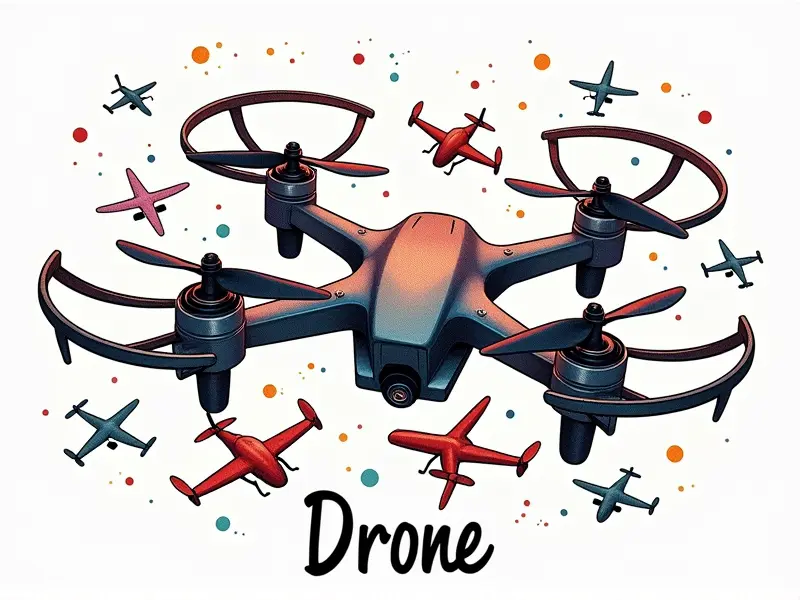What's an RC airplane?

Beginner's Guide to RC Planes
Welcome to the exciting world of radio-controlled (RC) airplanes! Whether you're a hobbyist looking for a new challenge or someone interested in aviation, this guide will provide you with all the essential information to get started. From understanding basic concepts to choosing your first model and learning how to fly, we've got you covered.
Understanding RC Aircraft Basics
RC airplanes are remote-controlled models that mimic real aircraft. They come in various sizes, shapes, and functionalities, offering a wide range of flying experiences. These planes can be electric-powered or gas-powered, each with its own set of advantages and challenges.
How Do RC Airplanes Work?
An RC airplane operates through a transmitter that sends signals to the receiver installed in the plane. The receiver controls servos (small motors) connected to control surfaces like rudder, elevator, ailerons, and throttle. This allows you to maneuver the aircraft from the ground.
Top 5 RC Plane Models for Beginners
- E-flite UMX Scout: A small electric model that's easy to fly and maintain.
- Hobbico Super Cub: Known for its stability, this plane is perfect for learning basic maneuvers.
- Spektrum AR6104 Air Hogs Sky Surfer: An affordable option with a simple design suitable for beginners.
- HobbyZone Sport Cub S: A larger model that offers more flight time and stability.
- E-flite Apprentice BNF Basic: Features built-in telemetry, making it easier to monitor your plane's performance.
The Best Places to Fly RC Planes
Finding the right location is crucial for a safe and enjoyable flying experience. Look for open fields or designated parks that allow model aircraft operations. Always check local regulations and obtain any necessary permits before flying.
Essential Gear for Your First RC Plane
- RC Transmitter: The controller you use to send commands to the plane.
- Battery Pack: Power source for electric-powered models, typically lithium polymer (LiPo).
- Receiver and Servos: Components that receive signals from the transmitter and control the aircraft's movements.
- Charger: Used to recharge your battery pack after each flight session.
RC Plane Maintenance Tips
Maintaining your RC plane is essential for its longevity and performance. Regularly check for loose screws, inspect the propeller for damage, and ensure all control surfaces move freely. Lubricate moving parts as needed to prevent wear and tear.
RC Airplanes: A Quick Overview
RC airplanes offer a unique blend of excitement and skill-building opportunities. They range from simple trainer models to complex aerobatic aircraft, catering to both beginners and experienced pilots alike.
Types of RC Airplanes Explained
- Trainer: Designed for learning basic flying skills with stability and ease of control.
- Racing: Built for speed, these planes feature sleek designs optimized for aerodynamics.
- Aerobatic: Capable of performing complex maneuvers like loops and rolls, requiring advanced piloting skills.
- Sport: Versatile models that combine elements from different categories, suitable for various flying styles.
Essential Features of RC Airplanes
- Fuel Efficiency: Important for gas-powered planes to ensure longer flight times.
- Built-in Telemetry: Allows real-time monitoring of critical parameters like battery voltage and motor temperature.
- Durable Construction: Ensures the plane can withstand crashes and rough handling during transport.
RC Plane Controls Simplified
Flying an RC plane involves mastering several controls:
- Elevator: Controls pitch (up and down).
- Rudder: Manages yaw (left and right turns).
- Ailerons: Regulates roll (banking left or right).
- Throttle: Adjusts engine speed for takeoff, flight, and landing.
Mastery of these controls will allow you to perform various maneuvers with confidence. Start by practicing basic turns, climbs, and descents before moving on to more advanced techniques.
Conclusion
Flying RC airplanes is a thrilling hobby that combines technical skill with the joy of flight. Whether you're just starting out or looking to enhance your existing skills, this guide provides valuable insights into choosing the right model, understanding basic mechanics, and maintaining your aircraft for optimal performance.

